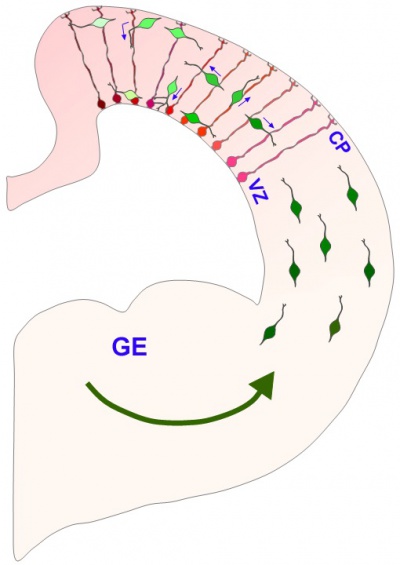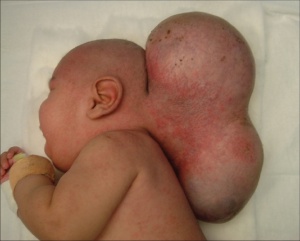2014 Group Project 7: Difference between revisions
No edit summary |
No edit summary |
||
| Line 82: | Line 82: | ||
- critical for appropriate brain development | - critical for appropriate brain development | ||
== Brain == | |||
ill fill this out - Sean | |||
(focusing on the early development --> fetal development stages) | |||
== Spinal Cord == | |||
Revision as of 14:49, 1 October 2014
| 2014 Student Projects | ||||
|---|---|---|---|---|
| 2014 Student Projects: Group 1 | Group 2 | Group 3 | Group 4 | Group 5 | Group 6 | Group 7 | Group 8 | ||||
| The Group assessment for 2014 will be an online project on Fetal Development of a specific System.
This page is an undergraduate science embryology student and may contain inaccuracies in either description or acknowledgements. | ||||
Neural - CNS
--Mark Hill (talk) 15:19, 26 August 2014 (EST) OK you have nothing here, not even a project title (that I added). I will be asking your group questions in the lab tomorrow. How about some content, references, sources for each section. See Lab 3 Assessment.
--Mark Hill (talk) 11:36, 6 September 2014 (EST) Better, but still just references and no content.
Introduction
- definition of CNS - brain and spinal cord
- Neural development before fetal period First trimester development: Neurulation = ectoderm (outer layer) forms initial structure of the CNS, and folds upon itself to form neural tube towards the end of week 3. head portion- becomes the brain, further differentiates into forebrain, midbrain and hindbrain (recognizable by the 5th week of gestation) middle portion- becomes the brain stem (about 5th week) neural tube differentiates into 3 primary structural units of the brain: the proencephalon (forebrain), the mesencephalon (midbrain) and the rhombencephalon (hindbrain) (by the 7th week) The prosencephalon divides into the telencephalon and the diencephalon, the rhombencephalon divides into the metencephalon and the myelencephalon. formation of 2 additional structures and creating 5 primary units that will become the mature brain
- this webpage focuses on development of CNS of fetal neural system.
Research History/Historic findings
<pubmed>19339620</pubmed> <pubmed>8005032</pubmed> <pubmed>9311417</pubmed> <pubmed>17848161</pubmed> <pubmed>12768653</pubmed> <pubmed>17060425</pubmed>
z3374116
Development during fetal period
<pubmed>21042938</pubmed> <pubmed>12060827</pubmed> <pubmed>23727529</pubmed> <pubmed>16905335</pubmed> <pubmed>17848161</pubmed> <pubmed>18760424</pubmed> <pubmed>16971596</pubmed> <pubmed>17032846</pubmed>
Timeline of human neural development [1]
1. cell proliferation
- Formation of neurons and glia
- Begins around 40th embryonic day and is almost complete around the 6th month of gestation [2]
- Occurs in germinal matrix that comprised of ventricular and subventricular proliferative zones of cells
2. cell migration
- migration of cells from the 2 ventricular zones to their final positions
- 2 migrations
1) primary migration: occurs from week 8 to 16 of gestation, and continues to week 25 with lesser activity
2) passive migration: result in the oldest cells locating farthest from the proliferative zone as they are pushed away by recently generated cells, this lead to midline structures including thalamus and regions of the brain stem
 Image of interneurons migration and interactions with radial glia in the developing cerebral cortex [3]
Image of interneurons migration and interactions with radial glia in the developing cerebral cortex [3]
3. cell differentiation
- begins after the migration of neuronal and glial cells to the final positions
- starts about the 25th month of gestation until adolescence
- axonal and dendritic properties become fine-tuned as cells transform into committed members of specialized systems
4. cell death (apoptosis)
- 2 mechanisms: axonal retraction and neuronal pruning [4]
- Axonal retraction: recession of the collaterals of a neuron’s axon or shrinking of the terminal arborization of the axon
- Other connections are removed through selective cell death in which neurons die as a result of failing to establish appropriate connections
- critical for appropriate brain development
Brain
ill fill this out - Sean (focusing on the early development --> fetal development stages)
Spinal Cord
Current research models and findings
<pubmed>19786578</pubmed> <pubmed>21501576</pubmed> <pubmed>21492152</pubmed> <pubmed>24664314</pubmed> <pubmed>24639464</pubmed> <pubmed>24284205</pubmed> <pubmed>24177053</pubmed> <pubmed>24051984</pubmed> <pubmed>24996922</pubmed>
Abnormalities
<pubmed>12454899</pubmed> <pubmed>25007063</pubmed> <pubmed>16530991</pubmed> <pubmed>7504639</pubmed> <pubmed>19651588</pubmed> <pubmed>25135350</pubmed> <pubmed>25128525</pubmed> <pubmed>24397701</pubmed>
Microcephaly:
• Cells in the brain (both neurons and glia) are produced by proliferation of cells in the ventricular germinal zone • Some physical (ionizing radiation, elevated maternal temperature), chemical (anticancer drugs) and biological (rubella, cytomegalovirus, herpes simplex virus) agents kill those dividing cells and lead to a reduction in the ultimate size of the brain • literally "no brain"
Clinical photograph showing the giant occipital encephalocele associated with microcephaly and micrognathia[5]
Hydrocephalus
• Due to obstruction of cerebral aqueduct between 3rd and 4th ventricles • Progressive enlargement of the head due to accumulation of fluid in ventricles upstream from the blockage may lead to problems with vaginal delivery • Thinning of the cerebral walls will cause mental retardation • Treated by shunting excess fluid in the lateral ventricles to the heart or peritoneal cavity
Fetal Alcohol Spectrum
• Disorder Binge drinking at critical stages of development (i.e. just after neural tube closure) can cause fetal alcohol syndrome
References
- ↑ Report of the Workshop on Acute Perinatal Asphyxia in Term Infants, U.S. Department of Health and Human Services, Public Health Service, National Institutes of Health, National Institute of Child Health and Human Development, NIH Publication No. 96-3823, March 1996.
- ↑ <pubmed>4203033</pubmed>
- ↑ <pubmed>17726524</pubmed>
- ↑ <pubmed>10532616</pubmed>
- ↑ <pubmed>3271622</pubmed>|[1]


